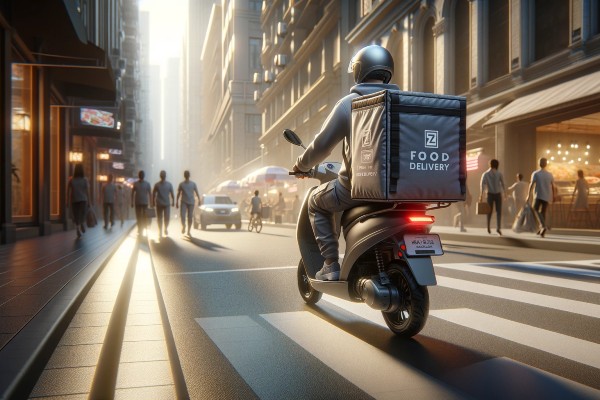If you think that Big Data and AI are a train waiting for you to embark on the new, fantastic journey they promise whenever you feel like it, we have some bad news for you: the train has already left the station. But fear not. It will make a few more stops before reaching its destination, so you can still get on it.
Here is a mind-blowing fact you should know about this journey: Big Data and AI are currently revolutionising the last-mile delivery industry, which is projected to increase at an annual rate of 8.8% by 2030, from a mere USD 132.71 billion in 2022. So, getting on this train could be more lucrative than pursuing many other entrepreneurial ventures. Read the rest of the article to find out how Big Data, AI, and other revolutionary technologies are transforming not only this industry but also any other economic sector, business, and even every life on this planet. Yes, the transformation really is that huge!
Just a hint before you continue reading: it has all to do with geolocation technologies!
How Big Data Can Take Businesses One Step Closer to Success
The fact that Big Data has recently been recognised as a new asset class is no longer a surprise. However, there is one important question we should ask ourselves: can all the data that we collect also become a top driver of transformational value for more optimised resource utilisation and business processes?
Nowadays, the vast and complex databases forming Big Data are reshaping the way most companies operate. Not only that but when Big Data is used in conjunction with the latest technologies, it can have a profound impact on a business—and potentially, at a much larger scale, on the entire economy. Considering all of the ramifications of data processing and the opportunities it can create, let’s find out how Big Data along with the new technologies and concepts revolving around it could help us, on individual as well as societal levels, drive innovation and efficiency while enhancing everyone’s experience.
Big Data – A Big Player in Achieving Better Business Results
From a business perspective, the main role of data analytics is to provide valuable insights into consumer behaviour, sales patterns, and market trends. These insights enable us to make better decisions about our marketing strategies as well as product and service developments for a superior customer experience. However, one thing many businesspeople still don’t know is that Big Data can help us go beyond all these.
There is no better way to explore how we can use Big Data along with the latest technology advances in order to improve not only our products and services but also our delivery models than putting everything in the context of a case study.
The Background
Just Eat, Uber Eats, Deliveroo, UpMenu, Food Hub, and Scaffable are some popular food delivery platforms in the UK. While these platforms are similar to many other food-delivery services—meaning they don’t offer anything special—the businesses behind them operate based on quite a revolutionary concept, known as “dark kitchens”.
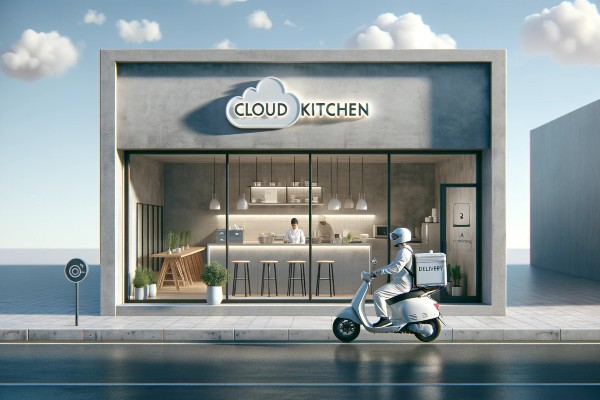
Also referred to as ghost kitchens, cloud kitchens, super kitchens, or virtual restaurants, dark kitchens offer meals exclusively through delivery services. That means there are no options to eat in or customers who come in to collect their orders. While all this may sound quite interesting, the connection between these businesses and Big Data is even more intriguing.
The Method
The way these specialised businesses operate involves preparing and delivering meals based on orders. Once a customer has placed an order via a food-ordering platform, the kitchen offering that particular dish starts to prepare it.
However, an important thing to note is that these platforms not only connect customers to dark kitchens but also make available third-party delivery services. Furthermore, they track each order in real time and use a notification system to keep customers, kitchen staff, and couriers up to date. That way, a delivery driver or rider who is or becomes available by the time the order is ready for pickup can show up to carry out the delivery within the estimated timeframe.
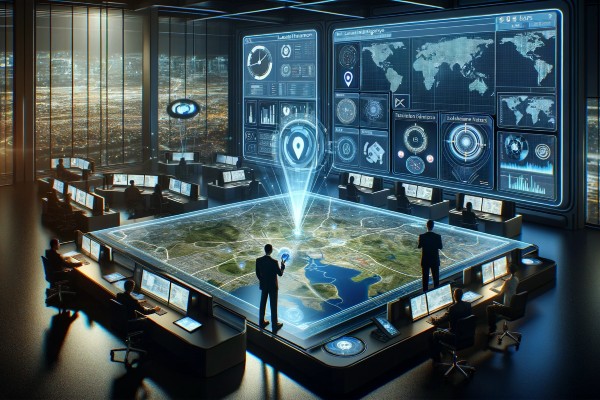
In case you’re wondering what Big Data has to do with the food you might have just ordered via your favourite food delivery app, the answer is: location intelligence. By harnessing the power of predictive modelling, which leverages historical data, geographical information, data analytics, statistical algorithms, and machine learning, this technology allows businesses to analyse and visualise data in a spatial context, which also includes future development prediction. Furthermore, predictive modelling enables business owners to identify emerging market trends as well as consumer behaviour patterns and preferences with great accuracy.
How is that possible? To begin with, predictive modelling technologies collect data from various sources, including GPS devices (like the devices used by food delivery couriers), mobile apps (including food delivery apps), and social media platforms, which can provide valuable insights into consumer behaviour and market trends. All this data then gets processed and analysed with the help of different machine learning tools, which use advanced algorithms to identify new correlations between different sets of data.
Based on these correlations and the new data that is created, a business owner can gain fresh insights into market trends and competitive dynamics as well as the needs and preferences of current and potential customers. As a result, he or she will be able to make more informed decisions about specific aspects, such as the best location for his or her business, what type of products or services to offer, and how to deliver them. Additionally, he or she could discover new market segments and target specific customers in those segments.
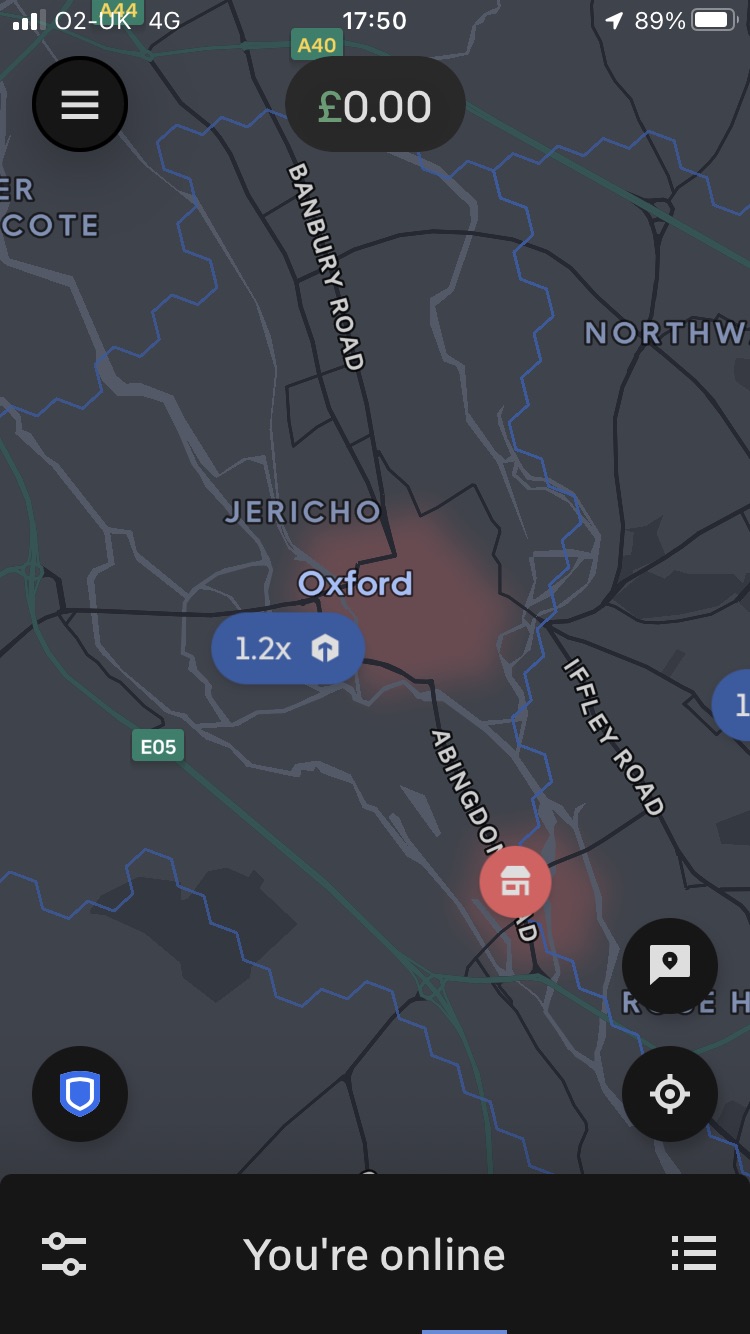
Thus, by simply using location intelligence, an entrepreneur running a virtual kitchen—or any other type of business for that matter—can strategically position the physical facility of his or her business in an area with greater growth potential, where the demand for the menu items provided will increase over time. That way, he or she will be able to ensure a steady influx of orders in both the near and distant future.
A restaurant on Abingdon Road, which currently receives more orders (as shown in the adjacent image) than its competitors that are also located outside London, is an edifying example of how this technology can benefit a business. Even though Oxford is now considered a hot zone for residents and start-up businesses, it wasn’t always prosperous. However, the entrepreneurs who realised the growth potential of the area and decided to open a business there a few years ago are now getting a good return on their investment.
The best thing about using location intelligence technologies is that business owners can finally avoid guesswork along with unnecessary risks and costly mistakes. In the past, selecting the right location for a business was quite challenging because the only aspects an entrepreneur could consider at that time were accessibility and foot traffic. There was no way to get information about the target audience, future competition, and expected developments in an area.
Fortunately, by empowering businesses to perform an in-depth analysis of consumer behaviour, market shifts, competition, and even construction and development plans, location intelligence has significantly improved the decision-making process. As a result, entrepreneurs can now understand their target audiences, competitors, and market trends at a granular level before making any decisions that will impact their businesses.
Business Scenarios in Which Location Intelligence Can Be Useful
Now that we know exactly how location intelligence works and what it can do for a business, let’s take a look at several industry sectors that can make the most of it.
Food and Beverage
By using location intelligence, a company operating in the food and beverage industry can analyse a series of factors, including geospatial data, population density, demographics, consumer behaviour, income levels, market trends, and competition. Based on all this data, decision-makers can easily determine the optimal location for establishments, what type of cuisines to offer, and how to price their products and services.
Retail
Location intelligence allows retail businesses to access data on demographics, traffic patterns, accessibility, and competitor locations. This way, they can select the best locations for their stores, choose the right inventories, tailor their offerings to meet the needs of potential customers, and develop effective marketing strategies.
Construction
With the help of location intelligence tools, a construction company can improve its strategic decisions regarding the types of construction projects to undertake and materials to use while enhancing its operational processes. Furthermore, location intelligence tools can be used in conjunction with AI technologies to monitor construction sites in real-time. This could help builders find new methods for improving on-site safety and productivity.
Logistics
By using location intelligence and AI technologies to track assets/vehicles, manage the supply chain, and optimise routes according to traffic conditions and weather forecasts, a logistics company will be able to reduce its delivery times and operational costs.
Healthcare
With location intelligence technologies, hospitals and clinics can identify areas with a higher prevalence of certain diseases. Based on that information, better resource allocation, prevention, and treatment strategies can be developed.
Energy and utilities
The companies in the energy and utilities industry can use location intelligence for better infrastructure, asset, and resource management. In addition, location intelligence can be used by companies in the energy sector to find new areas for renewable energy developments, such as solar and wind farms.
Insurance
By using location intelligence to analyse geospatial data, insurance companies can determine the likelihood of properties being damaged by natural disasters in certain areas. As a result, they’ll be able to better assess the risks associated and calculate insurance premiums more accurately.
Location intelligence can also be used by local authorities to manage infrastructure, transportation, land use planning, resource allocation, and public safety, predict and mitigate natural disasters, and coordinate emergency plans when required.
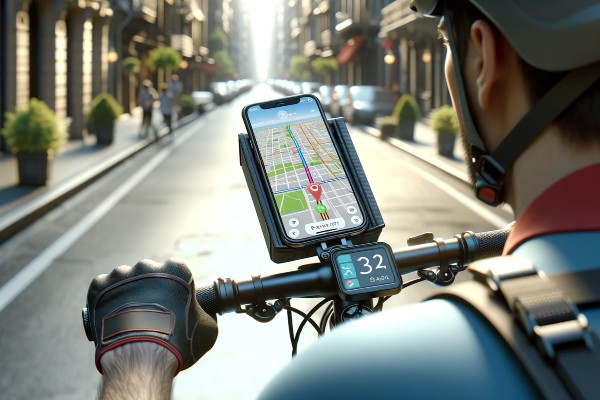
The Conclusion
Due to its ability to provide valuable insights that enhance strategic decision-making, location intelligence is becoming increasingly important across many industry sectors. However, this technology wouldn’t be able to provide organisations with the insights they need in order to make better decisions, identify and proactively mitigate risks, improve valuable metrics, and seize new opportunities for growth without Big Data. Therefore, we can safely state that Big Data is the true driving force behind location intelligence and other technology advances whose purpose is to improve not only our lives but also the entire world around us.
The era of Big Data is here! But the really good news is that we finally have the advanced tools to analyse and process the massive amounts of data that currently sit in silos, making them usable and productive. This could usher in a new paradigm that may further foster innovation, revolutionise industries, and initiate a total economic transformation. Given the potential of this transformative force, embracing and effectively utilising Big Data is no longer an option but a necessity for any organisation or society looking to thrive and succeed.

